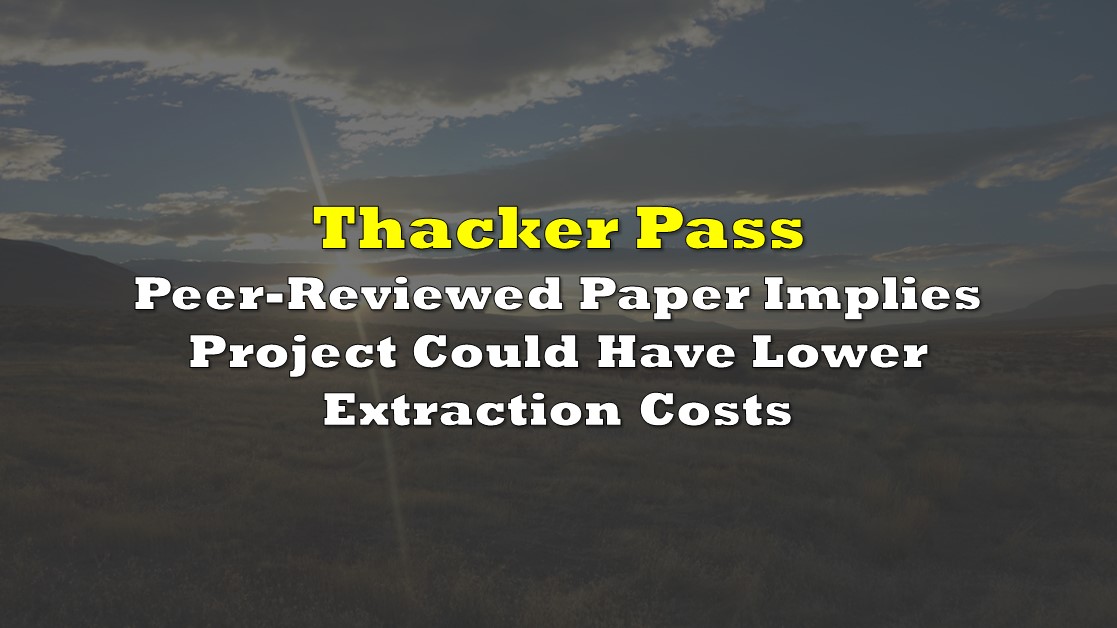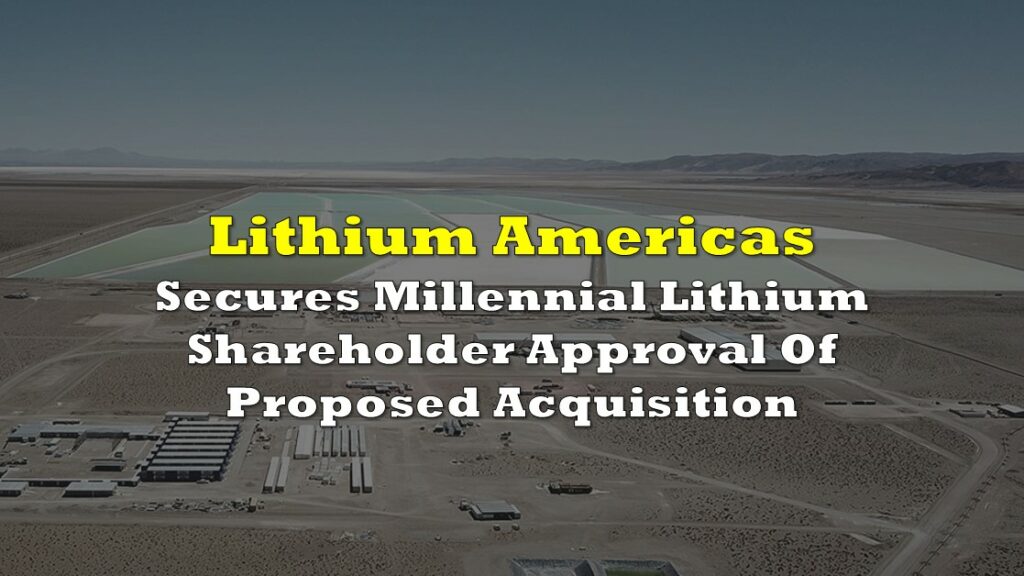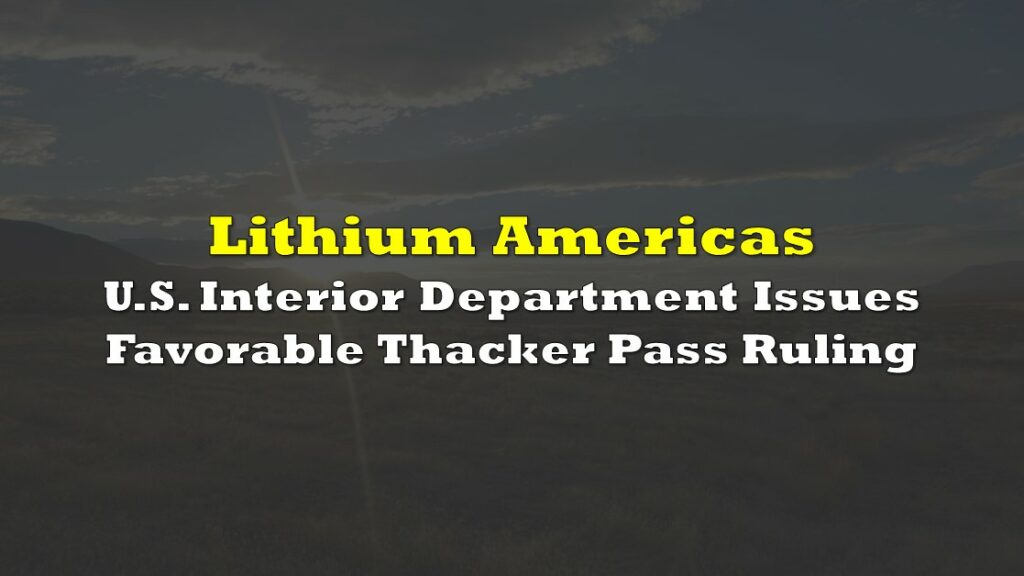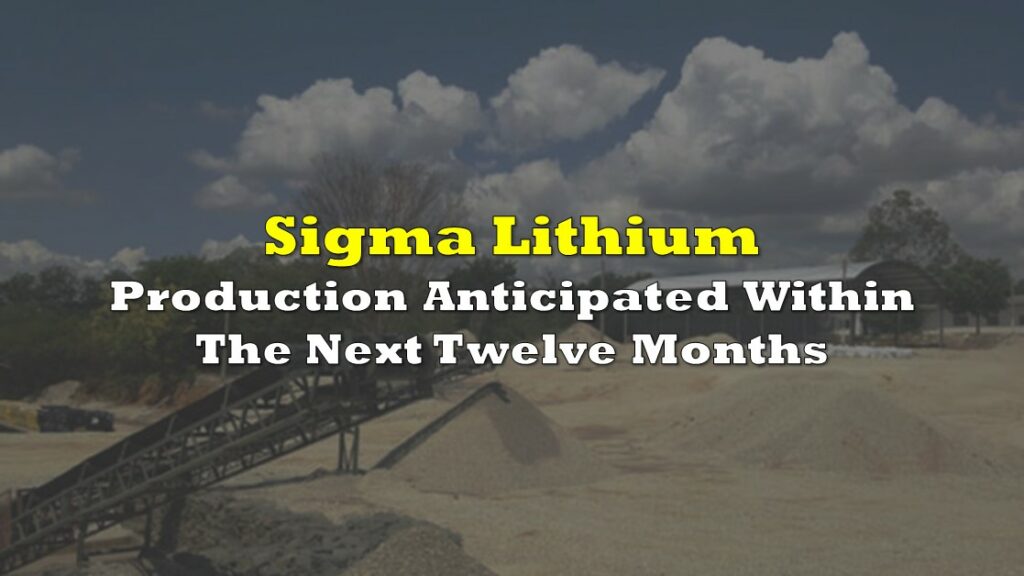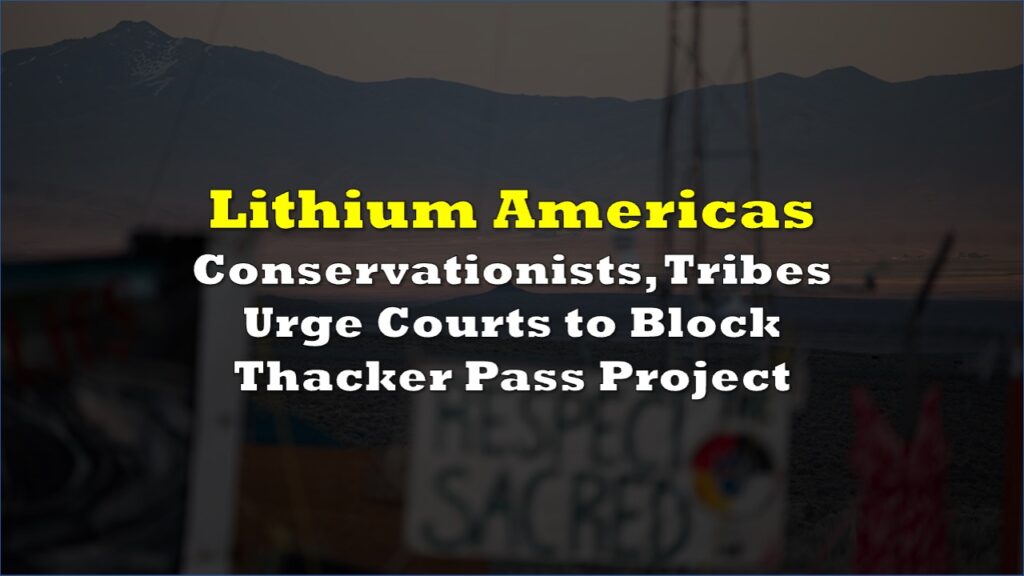In late August, three geologists published a peer-reviewed academic paper in the journal Science Advances which posits that an enormous quantity of lithium, perhaps 20-40 million tons, lies within a 40 kilometer by 30 kilometre volcanic crater called the McDermitt Caldera. This region was formed 16 million years ago and lies along part of the border between the U.S. states of Nevada and Oregon.
If these claims/preliminary calculations were to prove correct, the McDermitt Caldera would be the biggest lithium deposit on earth and would by itself at least equal the lithium reserves of all global deposits ever identified. Note especially that Lithium Americas Corp.’s (TSX: LAC) Thacker Pass lithium project lies within the outline of the McDermitt Caldera, and that the geologists believe that most of the crater’s lithium could very well lie in and around the area of Thacker Pass.
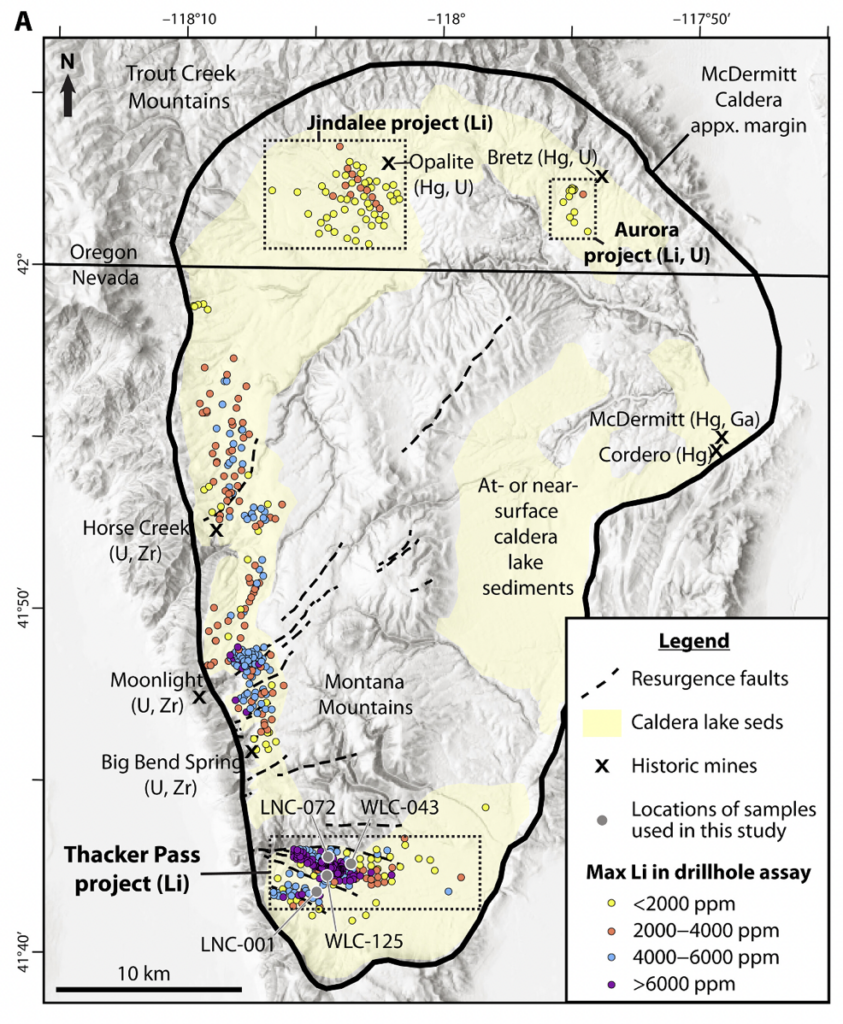
One point to note: one of the authors of the paper is Thomas Benson, Vice President of Global Exploration at Lithium Americas. He is also an Adjunct Research Scientist at Columbia University. The other two authors are not affiliated with the company.
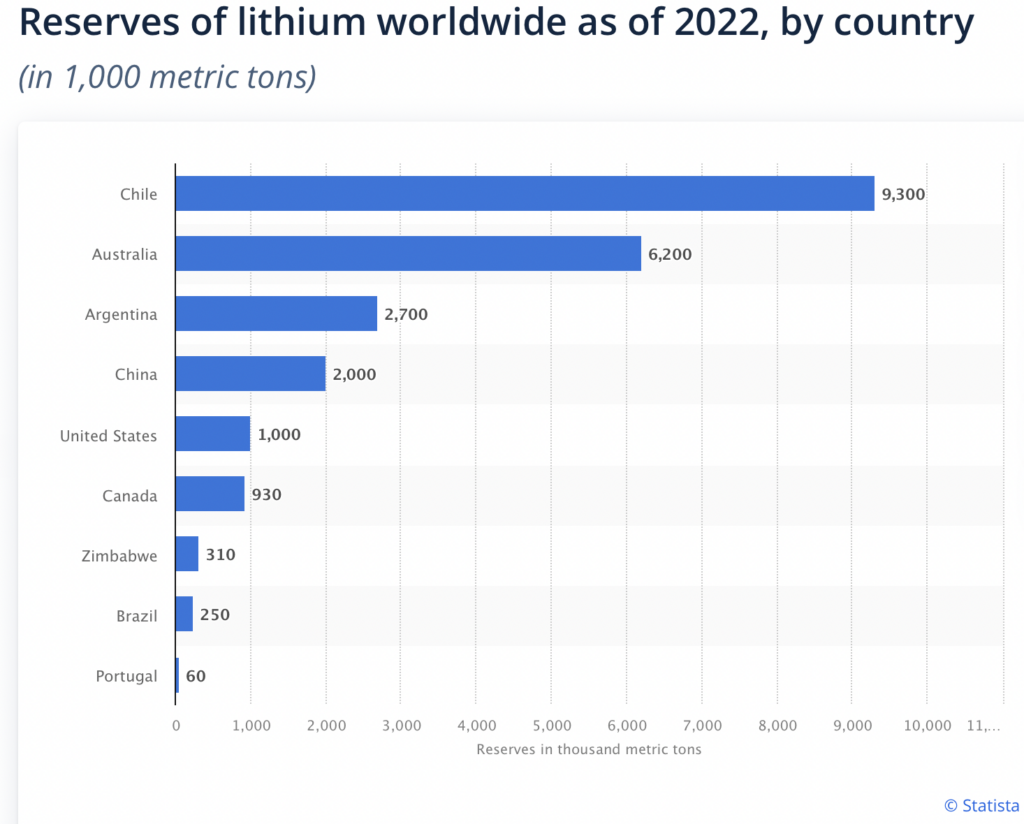
Most of the lithium at McDermitt is contained in a mineral called smectite. Under certain conditions, smectite can transform into a different material called illite, which can also be processed into lithium. A key observation of the three authors of the paper is that geologists had previously assumed that smectite and illite were both widely distributed across the volcanic crater; instead, they found high concentrations of illite only in the south, around Thacker Pass’ area.
The writers of the scientific publication believe that when volcano-heated lithium-rich fluid washed over the smectite, an illite material with a high degree of lithium concentration was formed. More specifically, they think illite in Thacker Pass contains more than twice as much lithium as Thacker Pass smectite.
Separately, two main types of lithium sources exist: brine recovery and hard rock mining. Both are expensive; hard rock mining is the more expensive and carbon-intensive of the two, but it is less laborious than brine extraction. Thacker Pass optimists think the McDermitt Caldera rocks may represent a third extraction category — volcanic sedimentary lithium. The theory is that separating such lithium-rich sediments may require much less energy and processing than the other two extraction methods.
So, if the theory put forth by the three authors of the paper recently published in Science Advances proves true, Thacker Pass could contain more than the three million tonnes of lithium as indicated in its NI 43-101 resource estimate published in November 2002. In addition, extracting that lithium may be more environmentally friendly and less costly than almost anywhere else. Of course, much further work would need to be done to prove these assertions true.
Lithium Americas Corp. last traded at $28.46 on the TSX Exchange.
Information for this briefing was found via Edgar and the sources mentioned. The author has no securities or affiliations related to this organization. Not a recommendation to buy or sell. Always do additional research and consult a professional before purchasing a security. The author holds no licenses.

